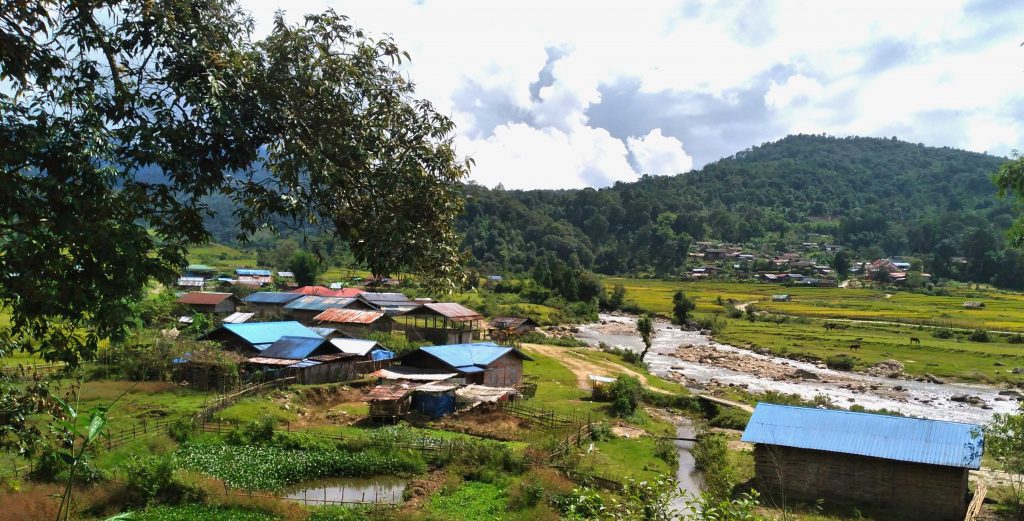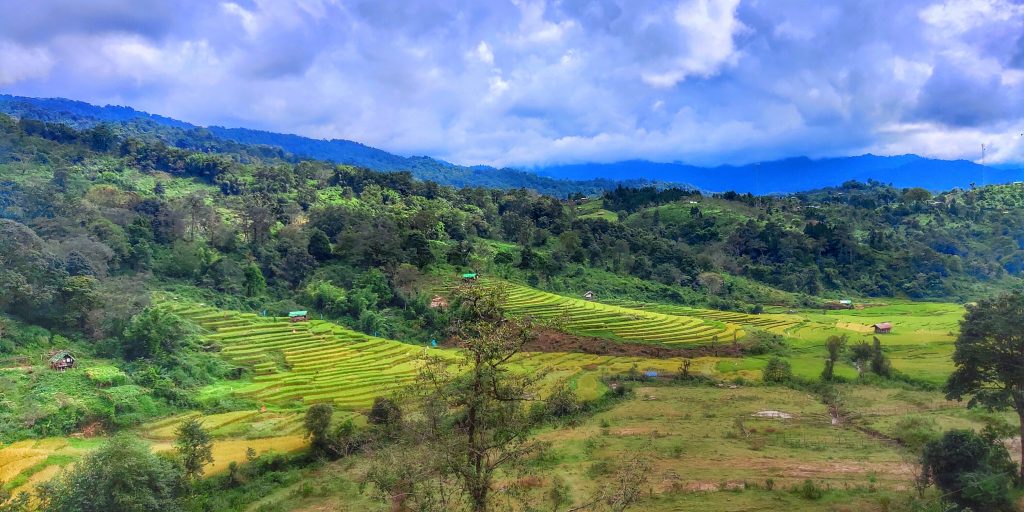Kachin State is one of my most treasured destinations in all of Myanmar – location of the highest mountain (Hkakabo Razi), source of the Irrawaddy River and home to the most delicious mountain food products in the country. It is in Myitkyina (the capital city) where I first met the fabulous Nin Htay in July 2015, researching bakeries for the source of their wickedly delicious ‘sa mots’ . Though we have kept in touch over the years and often catch up in Yangon, I thought it fitting that my first ‘virtual trip’ be to check in on her world of artisanal ‘mountain food’ production and find out how the farmers are coping during the pandemic.
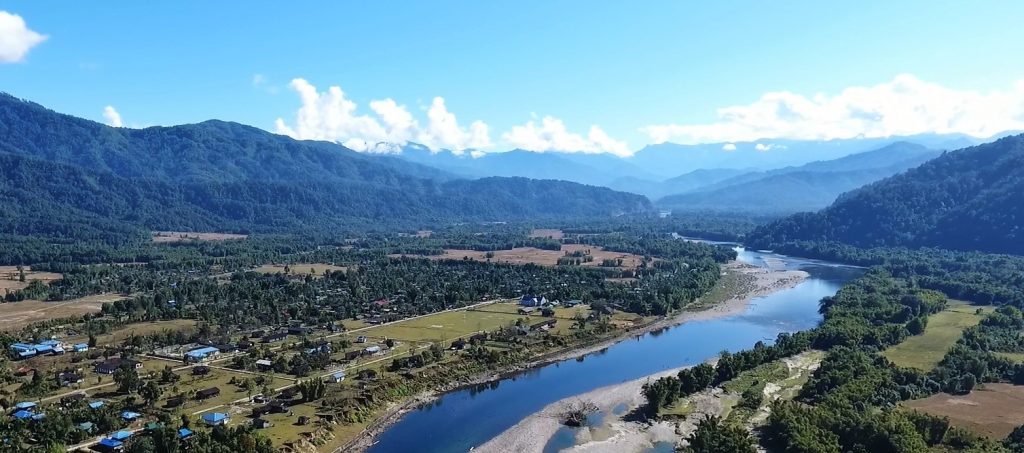
Kasante – the great river of the north, bringing life and nourishment and a bounty of delicious foods to those who live along its meandering path….. and also the name of Nin Htay’s Social Enterprise dedicated to packaging the mouth-salivating delectables from the surrounds. People in Yangon know the Kasante name for their irresistible walnuts – both roasted and caramel flavours – now being sold on-line in a re-sealable pack that I have never needed to test.

Sweet and savory walnut flavours 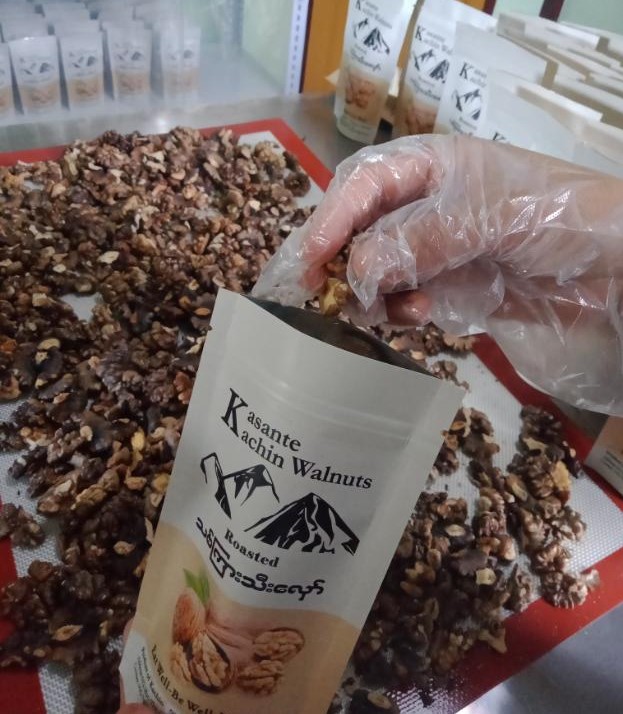
Carefully selected freshness – yumm
Kachin is full of tantalizing tastes from fruits, nuts, spices and other herbs mostly hand grown by farmers on family plots dotted amongst the natural landscapes. Kachin people are familiar with the unique taste of the Putao grapefruit, mountain persimmons, or 5-nut (a rare nut growing near Indawgyi in the west of the state). Communities plant their crops around their villages and mountain paths yielding natural and disarmingly simple yet unique flavors that animate the tastebuds and the imagination alike.
However, most of these crops are sold to impervious brokers for cheap prices and mixed into supply chains leaving customers oblivious to the foods’ origins or the villagers who nourish them. The Kasante team visited us just prior to the first Covid lock-down in Myanmar to taste-test their new product range of fruit and nuts being developed for the coming harvest of 2020. We were delighted with the new flavours and also the possibilities for promoting the farmers and growers themselves – but more on that later.
Well, it turns out – there is good news and bad news happening up north. I will allow you to savor the good news first.
Just prior to COVID, Kasante were busy installing their first solar dome drier, bought via a cost-share relationship with the Danish Responsible Business Fund http://www.rbfmyanmar.com/. The Installation was brought to us by the good team at 3 Star Snacks Mandalay and was being carefully transported to Myitkyina and assembled by Dr. Phyo’s Mandalay team so that Kasante could dry fruit and nuts in bulk more easily. The civil works were underway for a sparkling-new kitchen with the long term goal of reaching HACCP certification (food safety standard that enables export quality goods) located conveniently next door to the drier. Life was indeed looking both sweet and savory.

Kasante Solar Dryer 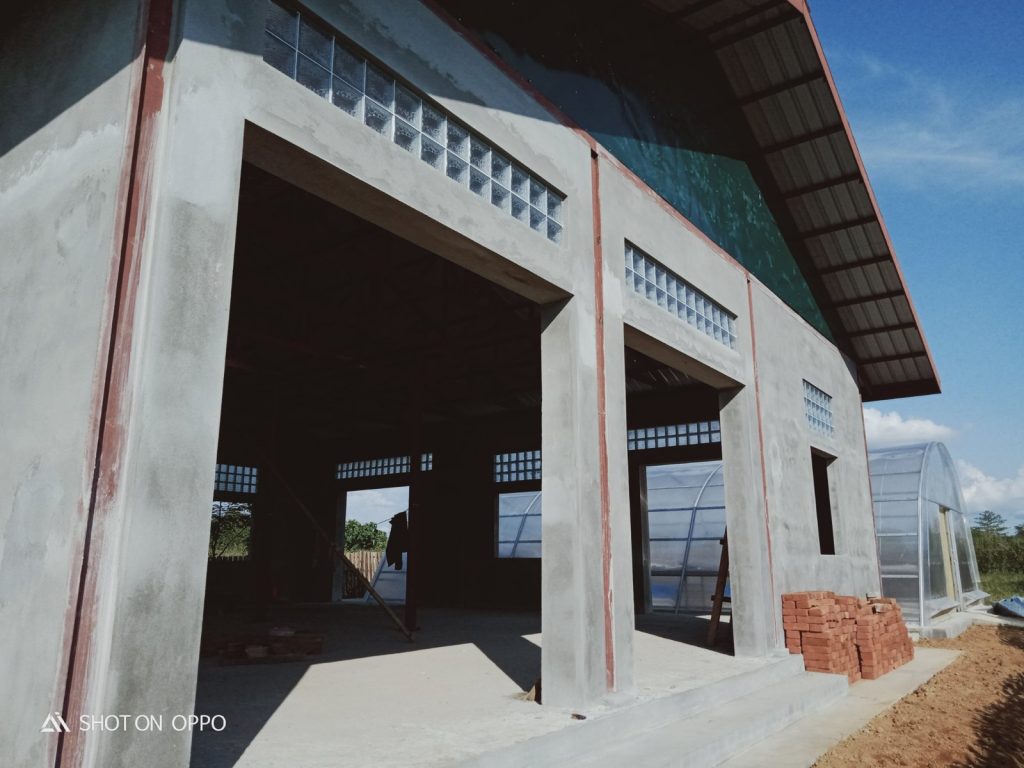
Kasante Kitchen In March 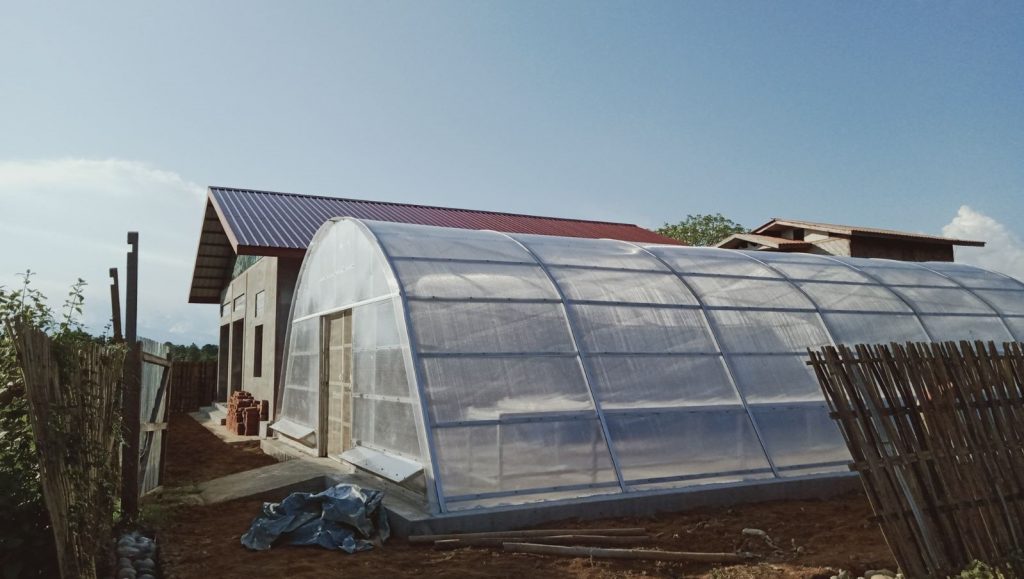
Co-located for efficiency!
Kasante also secured a grant to help build networks of growers in remote areas in Kachin. Funded by USAID under the Community Strengthening Project with the aim of building resilience into supply chains, Kasante started supporting local residents by improving the connections among the growers who live in relative isolation from each other but who face similar challenges from erratic transportation to the ever shifting front.

Displacement and isolation remain the major issues for many Kachin communities living in the mountain areas. Despite the persistent conflict (since 1961), some growers still return to their home areas to harvest walnuts and other cash crops. Widespread use of landmines, child soldiers, and the very real fear of conscription has meant the relocation of many growers to the urban IDP (Internally Displaced Persons) camps. They continued very cautiously over the years to return with family or community members to harvest cash crops like walnuts in between the hot spots that would boil over at any given moment.
Some of the more fortunate communities are finally able to return home permanently from IDP camps as peace slowly meanders its way through the valleys and villages. They have dreams of expanding their nascent cash crops and securing a better future for their families and are keen to work with Kasante to reach markets afar. Hope dawns.

Like many of the northern Kachin farmers, it was the Chinese consumers who bought the bulk of what they grew – at least in the pre-COVID days. Many of the walnut growers became interested in developing ‘grower clusters’ in hopes of making a better deal for themselves by increasing the quality of their supply for more ‘discerning markets’. Things were looking up.
(ahhhhhhhhhhhhhhhh…………………savor the moment………………..
go on, savor this moment……………
ahhhhh……….. so beautiful)
And then ……
COVID came knocking.
1. The solar drier installation crew had to go home;
2. The kitchen workers had to lay down their tools;
3. Travel restrictions and border closures impacted agriculture trade;
4. People got scared…..even more scared than normal;
5. Food started to rot ……and then needed to be dumped;
6. No money, no market, no livelihood for many people who lacked alternative market access.
Absolute complete tragedy unfolding before their eyes.

Throughout this, Kasante continued to try to find ways to work with growers, understand the impacts of Covid and check in with the people whose lives were severely disrupted.
Communities in Myanmar have encountered various shocks of flood and famine over the past decade alongside the very, very long war of insurgency that has claimed the lives of thousands of civilians and displaced over 100,000 people within the state. They have developed a few ‘evolving coping mechanisms’ for getting access to their harvest. These people have had to nurture a lot of grit and a lot of determination on a regular basis just to get by.

Life in precarious balance 
“Easy” access to the trees in Putao 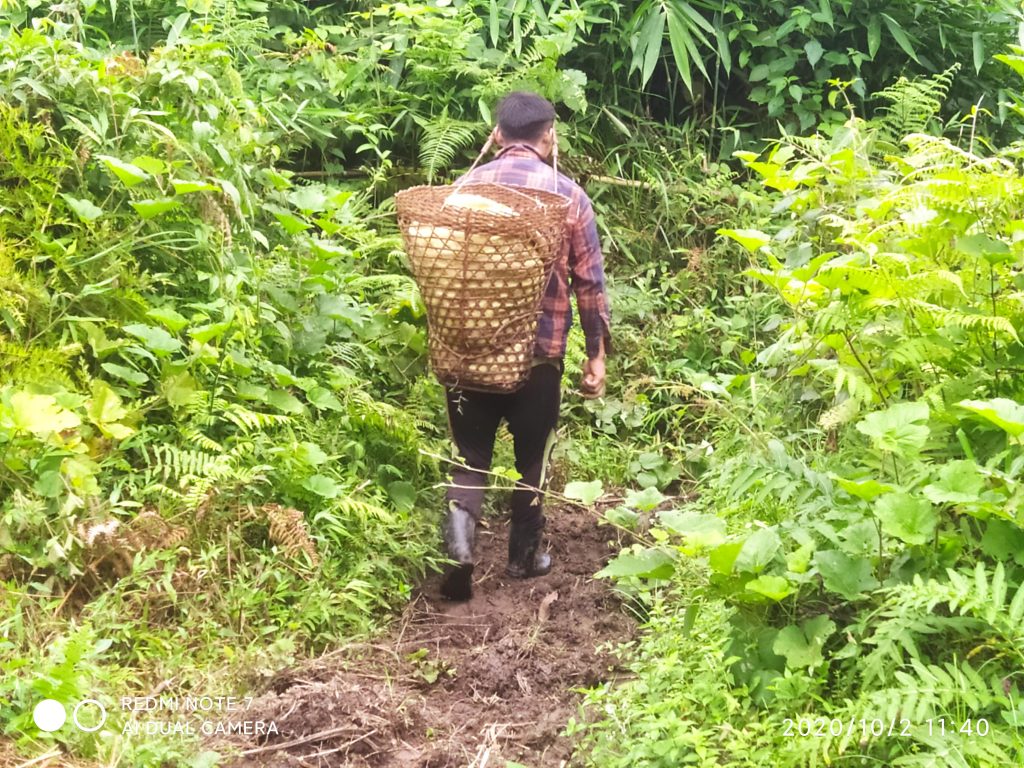
A growers walk to work
Sam Shugart, the co-founder of Kasante explained further, “the upland communities are sometimes in a better position than their low land mono-cropping counterparts as they can rely on diverse food production from intercropping.” In fact, I had seen this type of intercropping before especially with trees but also in bamboo forests and nurseries. Many of these grower communities keep some alternative food sources nearby or try their luck at some type of storage of the key food items (I’ve seen hand-dug holes in the back yard for storing grapefruit up in Putao). The growers used to gather in churches and local community centers and share their strategies. In the pre-COVID world.
These indigenous coping mechanisms struggle under the pressure of system-wide failures – the disruptions to border trade and the insane domino effect of income stresses or defaulting on microfinance debt. While the government and international development groups are working to improve issues around access to finance, responding to systemic stresses is often beyond the capacity of the Grower Community’s typical toolbox.
Using the funds from the USAID program, Kasante were able to document the stories of the growers and the impact of Covid on their lives. I attended the release by Webinar in July and remembered all the things I loved about Kachin and was deeply saddened by what I saw.
The Kasante team presented the grower areas surveyed in Kachin pre-covid “We met with over 100 growers from Sadong, Chipwi and Putao over the period of two months” explained Nin Htay:
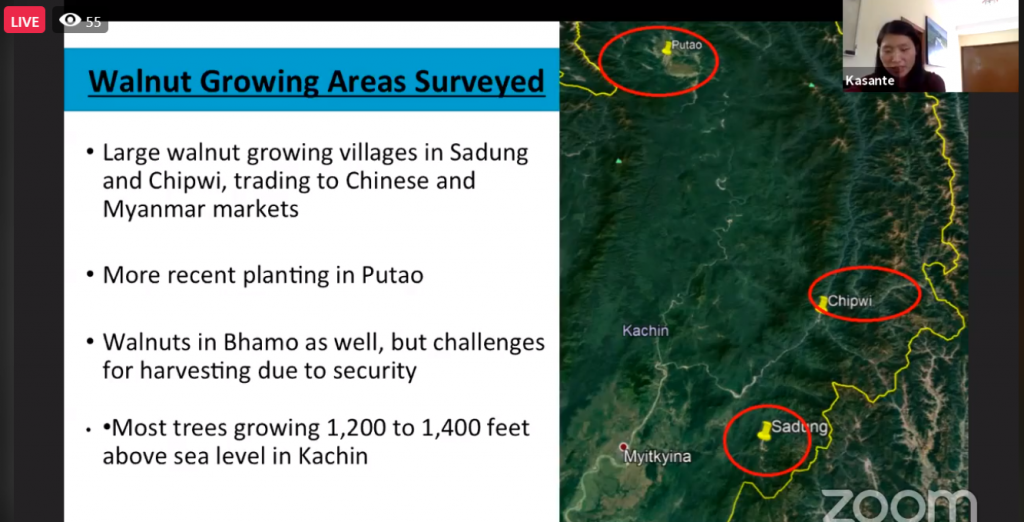
The rest of the team presenting that day added their stories of what they saw on the ground and heard from the growers (the report is full of alarming stories):
COVID-19 has created severe disconnects and destroyed the traditional outlets that growers used to connect with others. The markets they relied on in the past are no longer.
We have seen the COVID impact on traditional food supply chains and sales channels across the world – increasing the demand for rapidly evolving ‘e-commerce’ ‘sales channels’ to fill the void. If there can be a silver lining to the pandemic at all for supply chains it is that the nascent digitization of trade across Myanmar should finally start to boom – for some. On the other hand, this digital desperation can also herald the onset of a great ‘digital divide’ – whereby food producers in remote and least-developed areas are once more left out of the growth curve of the ‘new economy’. Isolation breeds ….more isolation.
So, the team at Kasante started working up solutions. Instead of focusing on larger group meetings, the team shifted to working with individuals or small groups of growers to organize a Participatory Guarantee System (or PGS) with the Myanmar Organic Growers and Producer’s Organization. Organic labeling is a complicated topic and most countries prohibit producers from self-labeling their product ‘organic’ without documentation. But 3rd-party certification is often expensive and impractical, especially in remote and conflict areas such as Kachin. PGS allows growers to work with buyers via a self-monitoring and check-in system, removing the high cost of participation while at the same time creating a way for growers and producers to back-up their organic and natural claims. Winning!
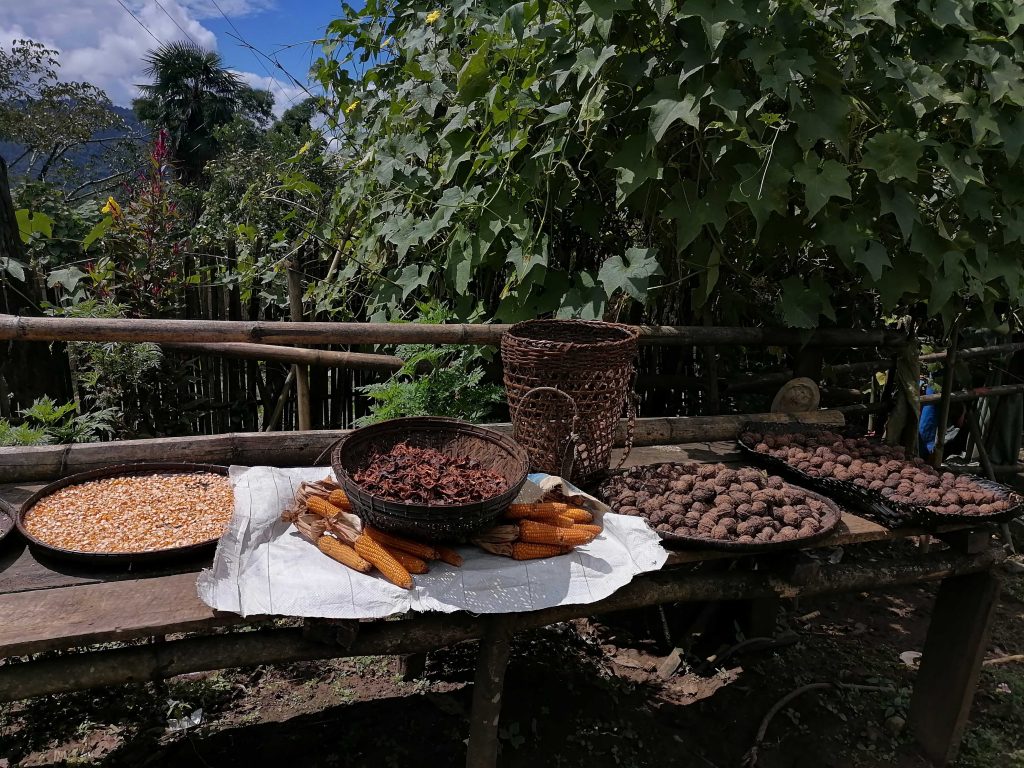
In Kachin, this solution is a great fit as most growers already follow organic practices by default. Why not design a program centered around organizing growers, promoting their amazing local crops, connecting them to each other digitally, and sharing their stories with the world? Kasante is meeting with growers to help them create digital content that is shared on social media, promoting unique crops of upland Kachin and creating connections between growers and consumers. The Community-Centered media program (a pivot on funds from the original Kasante DAI grant) to share the stories, challenges, perspectives of the upland growing communities was born.
Nin Htay elaborates, “the main video content will be created during harvest season (this November/December) and we will be working with communities of growers from each area to tell their story and share their challenges, their crops and local life stories in 3 to 5-minute videos” (there are more coming – but click the above link on ‘videos’ to check one out)

Check out this link for further inspiration: Farmers turn to Douyin, China’s version of TikTok 

Sam and Nin Htay are also doing their part using the walnut packaging itself and Kasante is now creating a QR code system for all of their nuts – each pack will connect to the story of the area the walnuts are sourced from. Helping discerning consumers realize that behind every pack of those yummy nuts there is a story – somebody’s real story of resilience against the extreme hardships of the north. Kasante’s goal? That nobody gets left behind. That’s worth our support if you ask me.
So what can you do?
Let’s get some on-line chatter happening. Help create new connections. Spread the word about Kachin crops. GET TO KNOW YOUR GROWER! Check in here: [Kasante Facebook] and when the videos are uploaded and ready, SHARE SHARE SHARE!
So go ‘nuts for the nuts’ folks! Buy ’em here:
- Shop.com.mm – For users who do not use other sites
- Simply Fresh: https://www.facebook.com/simplyfreshmyanmar
- Kokkoya: https://kokkoyaorganics.com/collections/kasante
- Go Green – Physical Store on Kandawgyi Lake
and enjoy every mouthful of organic goodness. Or contact the Kasante team on Facebook or at sales@kasante.co or give them a call at 09429477804 to order some bulk walnuts or to trial some of the new products. In the coming weeks and months, they also plan to work with grapefruit and walnut oil and quince. When the certifications are done, and the kitchen complete, they will be looking for partners to reach export markets both nationally and internationally and spread the joy. One delicious mouthful at a time!
Interesting Links:
You can download copies of the Community and Commodities Report here:
Kasante Communities and Commodities English – https://drive.google.com/file/d/1UO-PPqPYmcReABIaDi9K4bd4eqPcO3Pm/view?usp=sharing
Kasante Communities and Commodities Myanmar languge- https://drive.google.com/file/d/1Stm9gDTiRsfkJL7K5YFk03d9Ohlbk049/view?usp=sharing
Karen Hao (May 6, 2020). “ Live-streaming helped China’s farmers survive the pandemic. It’s here to stay.” MIT Technology Review. Available at: https://www.technologyreview.com/2020/05/06/1001186/china-rural-live-streaming-during-cornavirus-pandemic/
Walnuts (main focus):
http://www.kasante.co/sadong-walnuts/
Other Nuts
Honey:
Please use the sales@kasante.co email to get your hand on the finalised catalogue
